
5-Way
A 5-way power strip is ideal when you need more outlets than are available. This extension socket turns a single outlet into five separate connections. Perfect for a busy workspace or a living room full of electronics—organize and safely connect all your devices!
-
 Technik-Black29,95
Technik-Black29,95 -
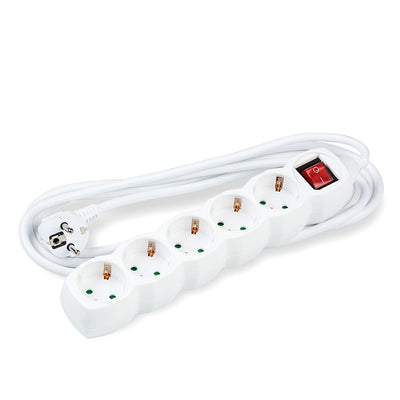 Technik
TechnikExtension socket Technik 1.5m 5-way
-White4,95 -
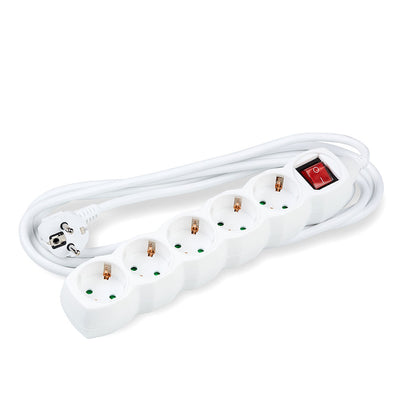 Technik
TechnikExtension socket 3m 5-way
-White9,95 -
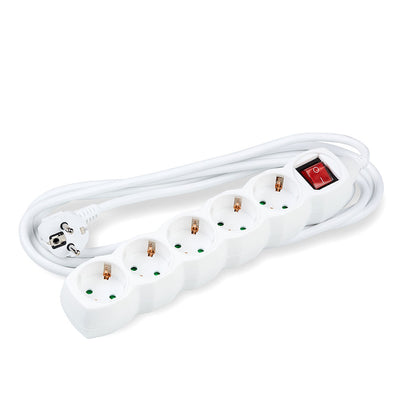 Technik
TechnikExtension socket 5m 5-way
-White13,95 -
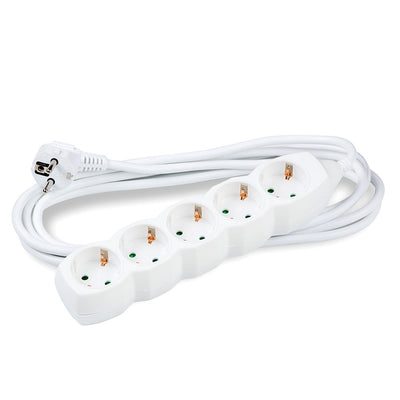 Technik
TechnikExtension socket 1.5m 5-way
-White6,95 -
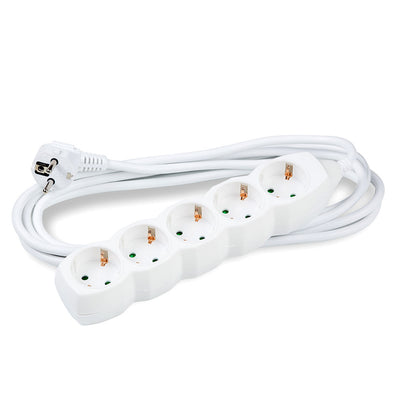 Technik
TechnikExtension Socket Technik 3m 5-way
-White8,95 -
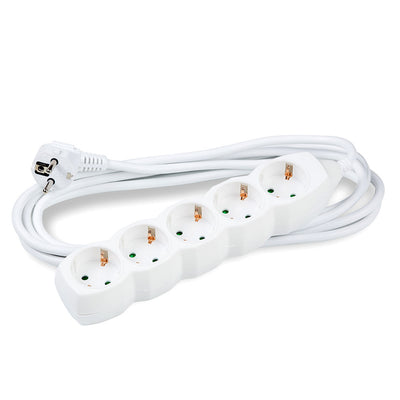 Technik
TechnikExtension socket 5m 5-way
-White10,95
Why a 5-way power strip is a practical addition
In modern households and workplaces, the number of electrical devices often exceeds the number of available wall sockets. A 5-way power strip gives you the option to connect multiple devices, such as computers, monitors, chargers, audio equipment, or kitchen appliances, to a single power source at the same time. This helps keep your space tidy and prevents unnecessary plugging and unplugging.
Many 5-way power strips are designed with convenience in mind, for example, with sockets placed at an angle. This is handy if you use plugs with a right-angled design, ensuring they don’t block each other and all five sockets remain usable. Pay attention to the orientation of the sockets if you expect to use many right-angled plugs.
Important safety features of a power strip
When choosing a power strip, safety is paramount. It’s important to know which features contribute to safe use, especially when connecting multiple devices.
Grounding and overload protection
Most 5-way power strips come with grounding. This is an important safety measure that ensures electricity is diverted to the ground in case of a fault in a connected device, reducing the risk of electric shocks.
Always pay attention to the maximum capacity of the power strip, expressed in watts. This indicates the amount of power the strip can safely handle. Overloading a power strip can lead to overheating and fire hazards. A typical maximum load for a 5-way power strip is 3680 watts, but always check this on the product itself. Power strips may also come with surge protection, which protects sensitive electronics against voltage spikes in the power grid, such as those caused by lightning strikes or switching operations.
A frequently asked question is: "Can I connect all devices at once to a 5-way power strip?" The answer depends on the total power consumption of the connected devices. As long as the combined power (in watts) of all devices stays below the power strip’s maximum load, this is safe to do.
Child safety and on/off switch
For households with children, child safety is an essential feature. These are small plastic shutters in the sockets that prevent children from inserting objects into the openings, greatly reducing the risk of electric shock.
Many power strips have an integrated on/off switch. This switch allows you to turn all connected devices off at once. Not only is this convenient, but it also helps save energy by preventing standby consumption from devices that would otherwise remain on.
Essential certifications
A power strip should comply with European safety standards. Look for the CE mark. Some power strips are also TÜV certified, which is an extra assurance of tested quality and safety. These certifications guarantee a product that meets strict requirements.
Variants and functions of 5-way power strips
In addition to basic power extension, 5-way power strips are available with a range of convenient features tailored to different uses.
Cable length and flat plug
The cable length of a power strip varies, usually between 1.5 meters and 5 meters or more. Choosing the right length helps you avoid unnecessary extension cables and keeps your workspace or room organized. Consider where you want to place the power strip and how far it will be from the wall socket.
A flat plug on the power strip’s cable is a handy detail with many practical benefits. These flat plugs hardly protrude from the wall socket, allowing furniture—such as a cupboard or bed—to stand closer to the wall. This is particularly useful in tight spaces.
USB ports and mounting options
Modern 5-way power strips are often equipped with USB ports (Type A and/or Type C). This allows you to charge smartphones, tablets, and other USB-powered devices directly, without needing a separate USB adapter. This reduces the number of adapters required and keeps the sockets free for other appliances.
Power strips may also offer different mounting options. Some feature mounting eyelets so you can easily attach them to a wall or under a desk. This provides a fixed, tidy power solution and prevents the power strip from trailing across the floor. Others are designed to be freestanding on a desk, where a stable base is important.
Indoor or outdoor power strip
The vast majority of 5-way power strips are designed for indoor use. This is indicated by an IP rating such as IP20. For use in damp locations like a bathroom, or outdoors, you need a power strip with a higher IP rating. A power strip with IP44 or higher is splash-proof and suitable for outdoor use, for example, under a shelter. Always ensure that the IP rating of your power strip matches the environment where you plan to use it.
IP ratings for power strips
| IP Rating | Protection against solid objects (first digit) | Protection against water (second digit) | Application area |
|---|---|---|---|
| IP20 | Protected against solid objects >12.5 mm | No protection against water | Dry indoor areas |
| IP44 | Protected against solid objects >1.0 mm | Splash-proof | Outdoor (sheltered), damp indoor areas |
| IP65 | Dust tight | Jet water proof | Outdoor (unsheltered), dusty/wet environments |
| IP67/IP68 | Dust tight | Submersible | For very wet environments, underwater |
Choose the right 5-way power strip
When selecting the right 5-way power strip, it’s important to consider your specific needs. Think about the number of devices you want to connect, their total power usage, the desired cable length, and the presence of additional features such as USB ports or a switch. By considering these factors, you’ll choose a power strip that is safe and functional for your situation.
For specific projects or professional advice, you can contact an electrician or specialized supplier. They can help you make the right choice for your installation materials.





